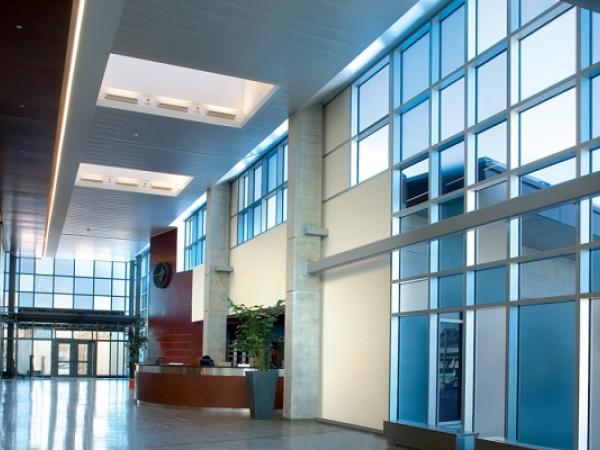
Date: 14 April 2016
One such effect is direct and indirect glare that may create huge discomfort. The nature of the activities taking place in the building will dictate the extent of glare control required. For example, a commercial building housing engineers, accountants, graphic designers or a university facility with study areas for students, all of them constantly working on computers may require more glare control. In general, areas located close to sources of natural light are also susceptible to require some glare control measures.
The other major challenge is to capture daylight and move it into areas otherwise dark and gloomy due to their location in the building interior. Luckily, there are multiple acid-etched glass solutions that can be used to achieve and maintain a comfortable and appropriate level of daylight throughout the day.
Let’s look at three effective strategies to meet the above mentioned challenges.
Light diffusion
A beam of light streaming through a simple window can be quite intense and create huge discomfort. In this case, a limited area of the building interior will get a concentrated amount of light, while the balance of the area gets little daylight, thereby being much darker and requiring more artificial light. This is the case with most windows and particularly true with special applications such as a skylight in high structures, like in a mall or museum or a clerestory area.
The challenge is to transform this intense beam of light into a more diffused light source and use it to light up a much greater surface of the building interior. Ideally, we also want to transport natural light into areas that don’t have a direct or indirect line of sight to the exterior.
Some acid-etched glass finishes carry a high haze percentage and are perfect to scatter light, transforming a straight beam into a soft array of light. Walker Textures® Opaque and Velour finishes on one or both faces of the glass can transform ordinary float glass into a light diffuser, thereby reducing excessive glare.
Light Absorption
While certain types of reflective glass products may be considered a great upgrade from solid materials in a sound daylight strategy they may fail to provide a smooth and pleasing environment to the building occupant. When highly reflective glass is used close to sources of natural light they tend to create quite a bit of glare and reflect too much light back into the space. This may become a major irritant for people located in that space.
In this case, the use of acid-etched mirror is a perfect solution, thanks to its light absorption properties. And acid-etched mirror provides a unique visual look with its subtle reflective surface while absorbing natural light, resulting in limited glare, maximum light retention and a comfortable interior space for its occupants.
Light Penetration
While it may be easy to maximize daylight penetration through exterior walls or roofs of buildings, other areas such as basements, enclosed areas or rooms further away from natural sources of light represent a much bigger challenge.
It is possible to use solar collectors and fiber optics to move sunlight into poorly day-lit areas of the building, but this strategy can be quite expensive. Acid-etched glass is a much more cost effective solution offering the option of integrating design and aesthetics in a sound daylighting strategy.
Because acid etching creates a translucent finish which does not reduce the light transmittance ratio of a glass substrate, it can be used to replace solid walls to allow as much natural light as possible to flow through while achieving other goals such as privacy and design.
As you can see from the above strategies, functional and aesthetic properties of acid-etched glass and mirrors are suitable to a wide range of applications, some of which include:
- Clerestories
- Office partitions and dividers
- Screen walls
- Building façades (curtain wall or windows)
- Skylights & atriums
- Glass walkways
- Canopies
- Railings
- Doors
If you need further details on Walker Textures® acid-etched glass products, please contact our architectural experts or go to our website at www.walkerglass.com.
 600450
600450
















Add new comment